As an Amazon Associate I earn from qualifying purchases.
Caldereta is a slow-cooked stew from Spain, with versions across Latin America and the Philippines. Usually made with beef, I use a venison neck roast. It’s a stick-to-your-ribs, hearty stew.
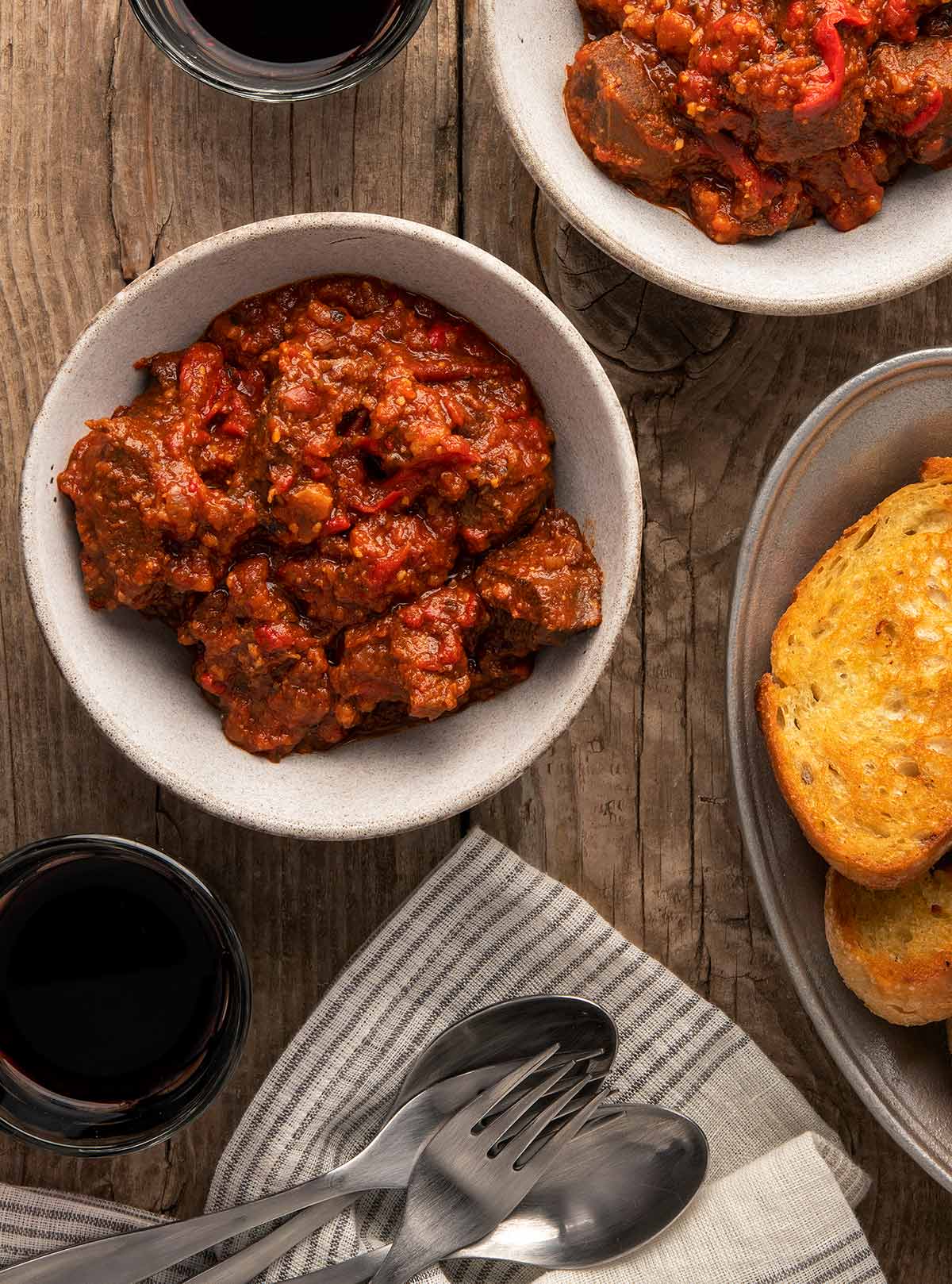
As you can see, caldereta is a “dry stew,” wetter than a traditional braise but drier than a traditional stew, like the very similar dish chilindron.
The name is derived from caldero, which means cauldron, which is what you cook a caldereta in. Not having a cauldron handy, I use a Dutch oven or a slow cooker — this is an ideal slow cooker venison recipe.
Keep in mind this is the Spanish version of the dish, not the one from the Philippines, which seems to be more popular. My rendition is from Andalusia, and is inspired by the excellent books Andalusia by Jose Pizarro and The Foods and Wines of Spain by the late Penelope Casas.
At its core, caldereta is a thick, one-pot meal that is normally eaten with bread. The meat can be anything from lamb to beef to poultry and seafood — there are calderetas of quail and lobster.
Because caldereta cooks for hours, it is an ideal recipe for a venison neck roast, or any cut of meat with a lot of connective tissue. Other good options are shoulder roasts, shanks, and general stew meat from pretty much anything from a deer to an elk to a goat to a sheep or cow.
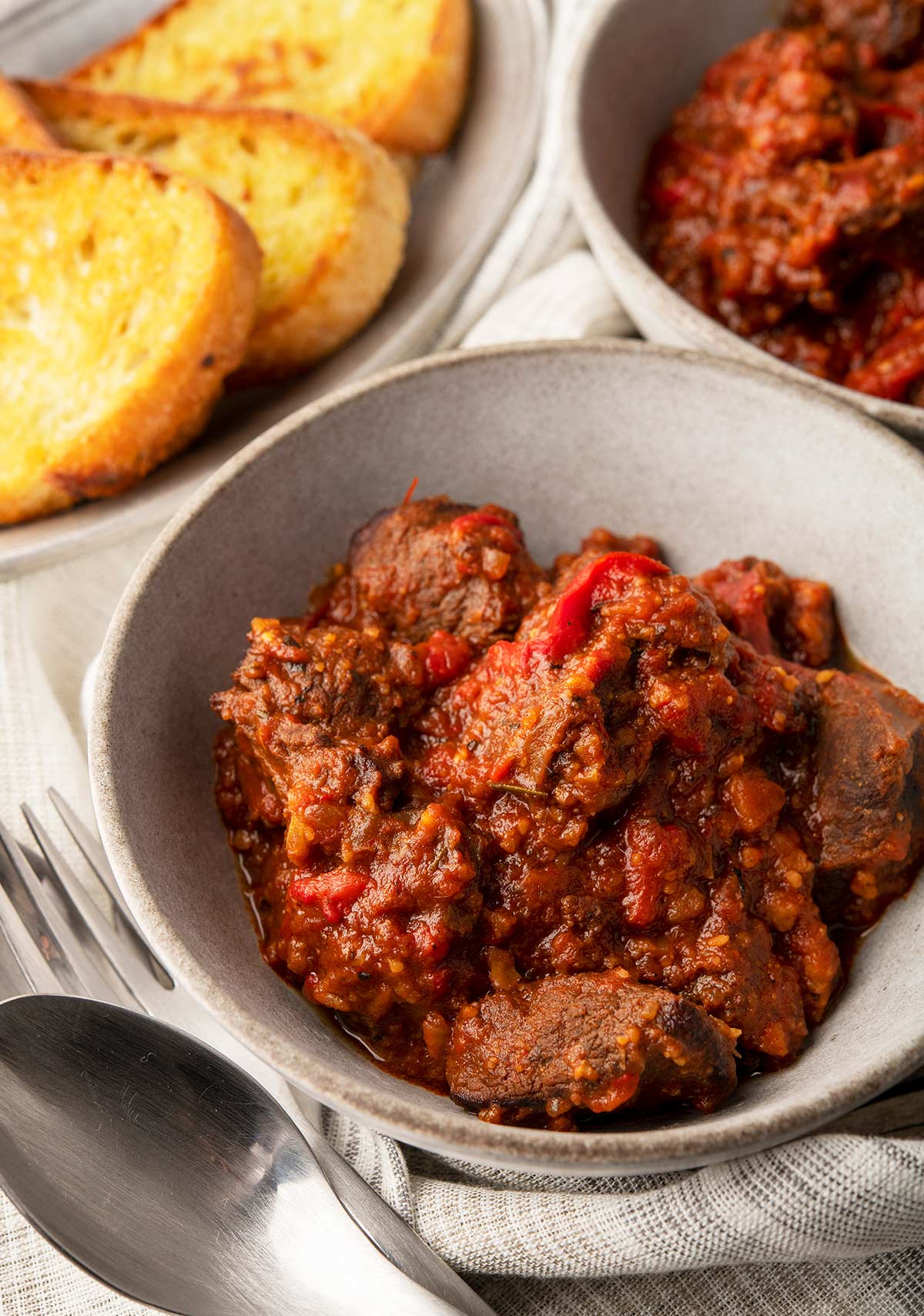
Like its brothier cousin chilindron, caldereta relies heavily on red peppers, sweet and hot, tomatoes, herbs and red wine. If you don’t want to eat it with bread, add potatoes or other root vegetables.
The only unusual aspect of this recipe is the use of a late-in-the-game seasoning paste called a picada, which in this case is stale bread, almonds and rehydrated red peppers fried in olive oil and ground into a paste. Its addition near the end adds a ton of flavor to the caldereta and thickens it considerably.
Once made, the stew will keep a week in the fridge and freezes well. Quarts of caldereta can also be pressure canned for 80 minutes (follow your pressure canner’s directions) so long as you can it before the picada goes in; that you need to make when you serve it.
If you liked this recipe, please leave a ⭐️⭐️⭐️⭐️⭐️ rating and a comment below; I’d love to hear how everything went. If you’re on Instagram, share a picture and tag me at huntgathercook.
Spanish Caldereta
Ingredients
- 3 pounds venison or other meat, cut into chunks
- Salt
- 1/3 cup olive oil, divided
- 2 cups chopped yellow onion
- 4 cloves garlic, minced
- 2 to 4 red bell peppers, seeded and sliced about 1/4 inch thick
- 2 bay leaves
- 2 tablespoons minced fresh rosemary
- 2 teaspoons dried thyme
- 1 tablespoon Spanish smoked paprika, or sweet paprika
- 1 1/2 cups red wine
- 1 quart venison or other stock
- 1 28- ounce can, whole peeled tomatoes, or 2 pounds fresh
- 1/2 cup tomato puree, or 1 tablespoon paste mixed with 1/2 cup water
- black pepper
PICADA
- 3 tablespoons olive oil
- 1 slice stale bread, broken up, about 2 ounces
- 1/2 cup slivered, blanched almonds, about 2 ounces
- 3 guajillo or other semi-hot, dried peppers, seeded, rehydrated, and torn up.
Instructions
- Salt the meat well and let it sit on the counter while you chop all the other vegetables.
- Heat half the olive oil in a large Dutch oven or similar lidded pot — or, if you are using a slow cooker, a really big frying pan. Pat the meat dry with paper towels and brown in the olive oil. Take your time with this and don't crowd the pan. Move the browned meat to a bowl if you are cooking in the Dutch oven, or to the slow cooker if using that.
- Chances are at some point in the process you will need more of the olive oil. You'll definitely need it when the meat it done to sauté the onions and garlic. Cook them over medium heat for about 10 minutes, stirring occasionally, until translucent and soft. Add the garlic and cook another minute or two.
- At this stage, you will either move everything to a slow cooker, or start loading up your Dutch oven. Add all the herbs and spices except the black pepper, the meat, the sliced bell peppers, the stock, wine and the tomato puree. One by one, hand crush and shred the whole, peeled tomatoes into the pot. Use all the juice and sauce left in the can, and rinse the inside of the can with a little water and add that, too. Mix well, bring to a simmer, add salt to taste, then cover and cook gently on medium-low until the meat is tender, maybe 2 1/2 hours.
- When the meat is tender, uncover the pot and increase the heat so it's boiling. You want to cook the caldereta down.
- Meanwhile, make the picada by frying the almonds, stale bread pieces and peppers in the olive oil. You want them lightly browned. Grind to a paste in a mortar and pestle or food processor. Add to the stew with the freshly ground black pepper and mix well. Cook until the caldereta is thick.
Notes
Nutrition
Nutrition information is automatically calculated, so should only be used as an approximation.
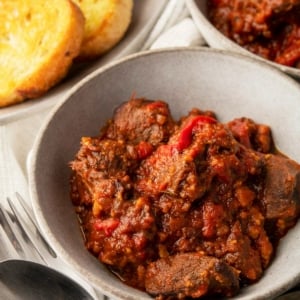
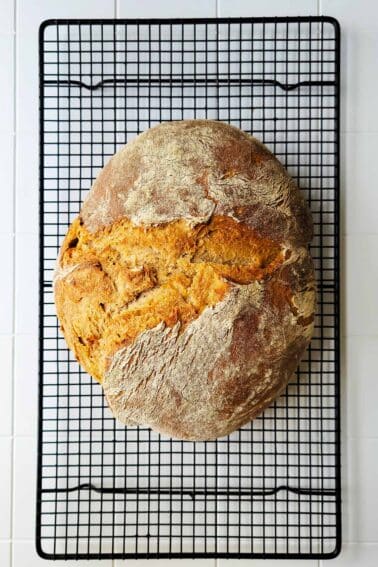
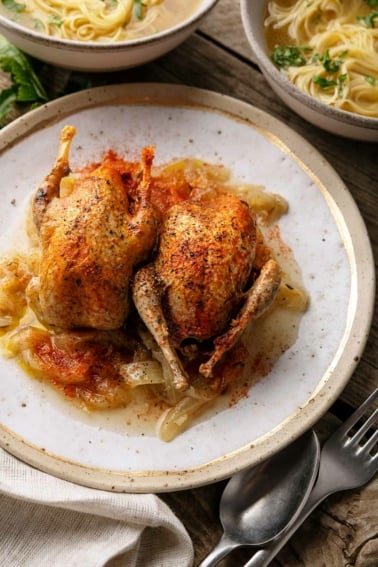
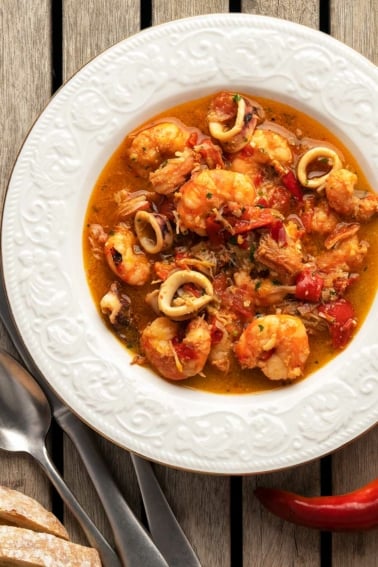
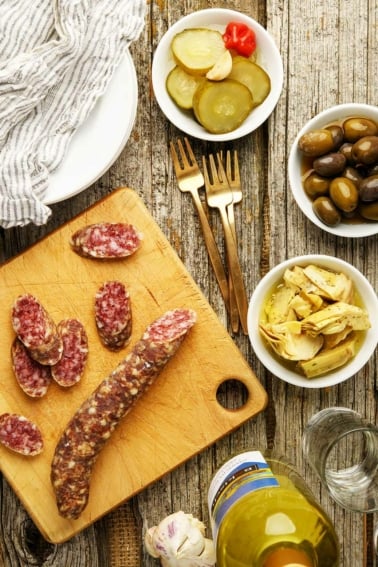
Hi Hank – I’m a big fan of your Chilindron — and I see others in the comments are as well. I made a vegetarian version of it with mushrooms, assuming this would work as well. Thoughts on any changes/additions you’d make to this recipe if I went with mushrooms? Thanks!
Chris: Nope, I think you’d do the same thing as with chilindron.
Hi Mr Hank, what is the best red wine you can recommend to use and
cook with?
Carla: Well, I’d cook with a simple Rioja or Tempranillo here, but I’d drink a much better Rioja, Graciano, Monastrell or Tempranillo.
Thank you, Sir! I would definitely try this recipe.
AMAZING. I needed to use up fresh peppers so I tried this one over the chilindron which asked for jarred roasted peppers. I used walnuts instead of almonds and those worked. Smoked paprika really added flavour and aroma. Whitetail stew meat.
This just got added to our pressure canning list for late summer when fresh peppers are back.
OMG ! Jojo 🙂 my dad was stationed in the Phillipines WWII and his Venison Stew was made w pimento stuffed olives … I bet he learned to make it there as he said the officers’ mess chefs were amazing cooks ! I made this a week ago and my husband loved it so much I made it again Sunday and sent 1/2 to a friend that is in wheelchair for awhile and her husband who does not like “chili” loved this too ! Hank … I did add 2 cans black beans rinsed and drained and did not make the Picada for my gentle tummy hubby :-)We met you long ago at Pirogue Grill “”Duck Duck Goose” book signing event in Bismarck ND.
Didn’t have neck…so used shanks, so great.
It’s cooking now – and the picada is ready to go on the side – so my kitchen smells amazing! One question though – what happened to the black pepper? Omitted in step 4 but never added after that?
Aleks: It gets stirred in right at the end, so you can taste it. I’ll fix the recipe instructions.
Figured as much – and it turned out awesome. Another winner! Thanks Hank!
Hey Hank!
Same question about the wine.. I’m assuming it goes in with the stock and tomato’s? Or would it be better to deglaze with it after the onions/garlic? I’m cooking this bad-larry up tonight! Really excited!
Thanks as always
Kitt: yes, Step 4 is when you add the wine.
What seafood can you use in it?
Tony: Typically shrimp and lobster.
It would be hard to top the Chilindron but this just might do it. When I go to make it, I’ll likely use jarred roasted red peppers instead of fresh and I might put it in the oven to cook instead of on the stovetop. I will report back after version 1.0.
Hank,
I’ve made this every fall & winter since you first put it on your website. It is OUTSTANDING! Thanks so much for the enjoyment it has provided.
Folks, if you haven’t tried this stew, don’t delay.
Whoops! My bad. I thought this was for CHILINDRON 🙂
Now I have to try this one!
Hi!. I’m a Fil-Am who was born and grew up in the Philippines. I’m also ancestrally-traoned when it comes to cooking traditional Filipino food. I can tell you that this recipe is very very similar to our family’s traditional beef caldereta. The only difference is, in our family recipe, we also add sherry wine vinegar, Spanish chorizo or chorizo de Bilbao (Spanish-style chorizo from the Phil.), canned garbanzo beans, brown sugar and liver paste made from grilled liver that’s ground into a paste. We also add pimenton-stuffed manzanilla olives, and green bell peppers aside from the red ones.
Jojo: I was wondering about the Filipino version, thanks! I know that it’s a big deal there, but I know basically nothing about the cuisine of the Philippines. Spanish I know… 😉